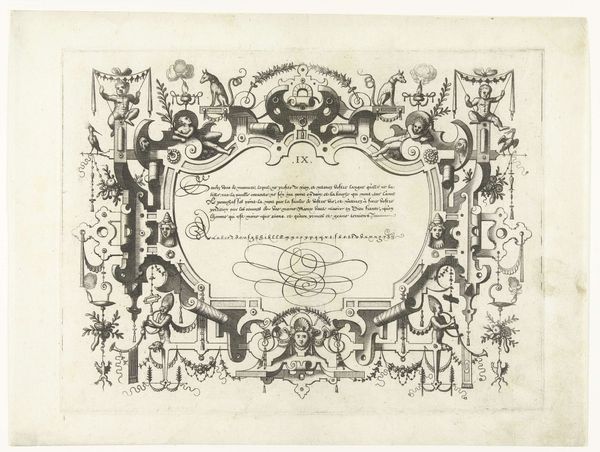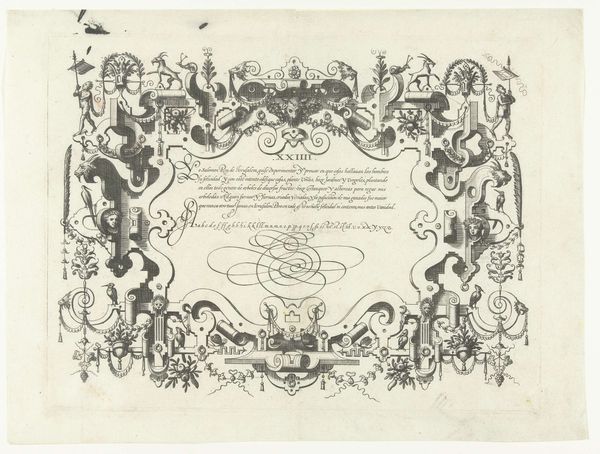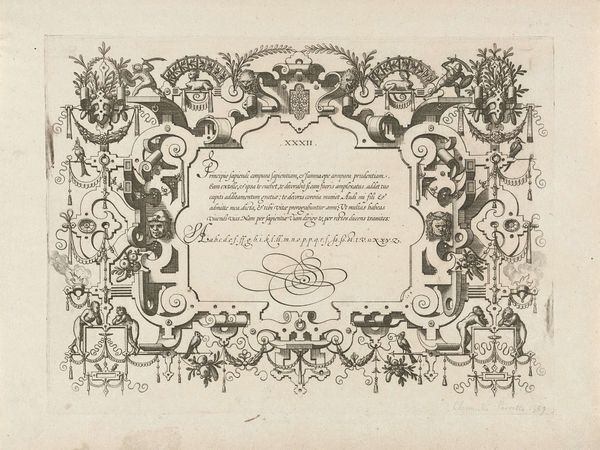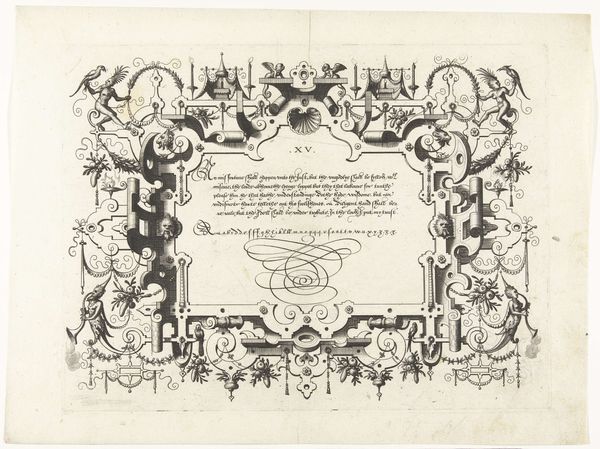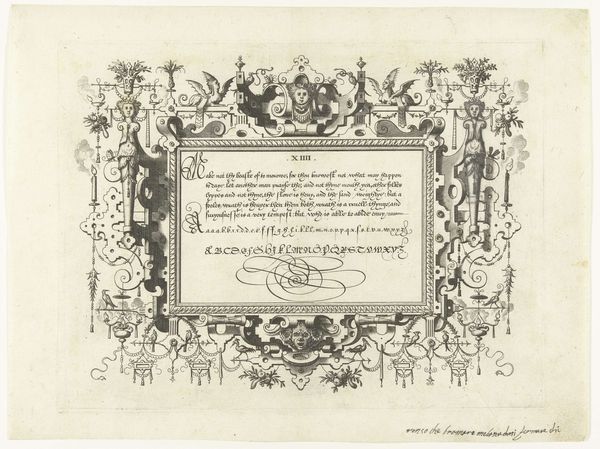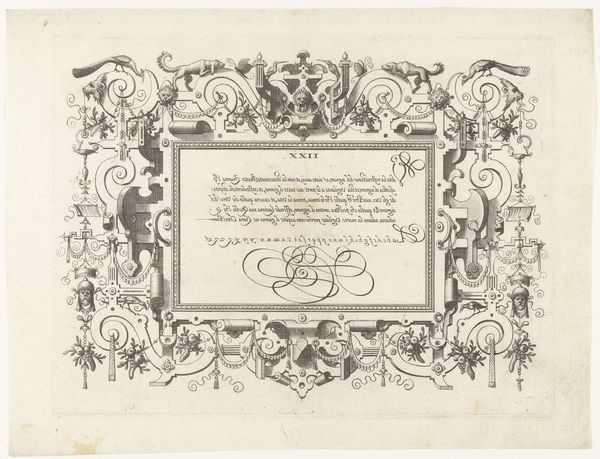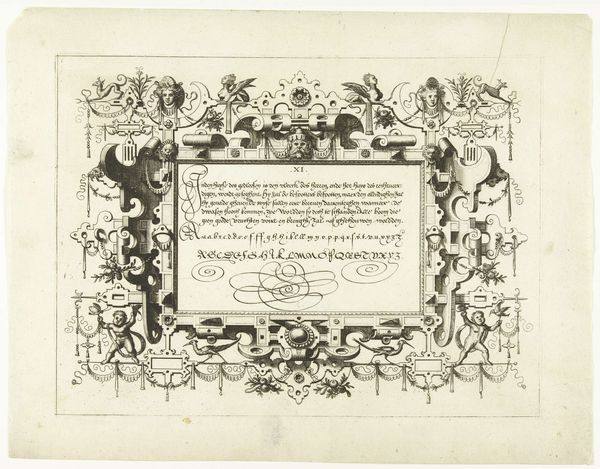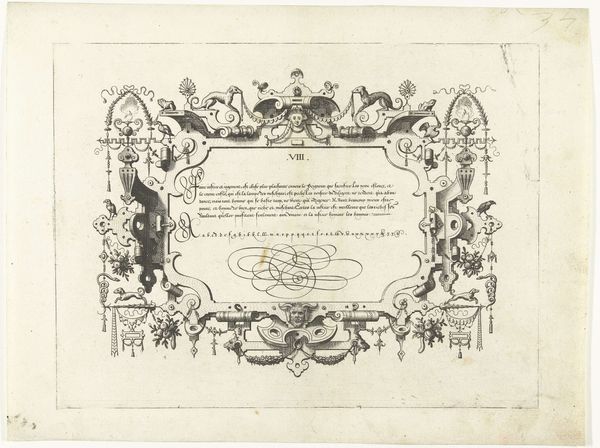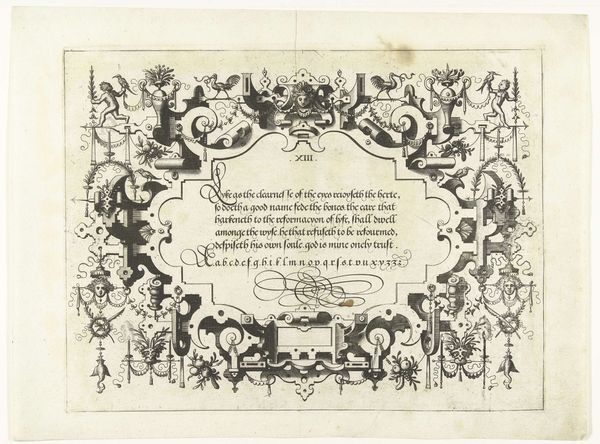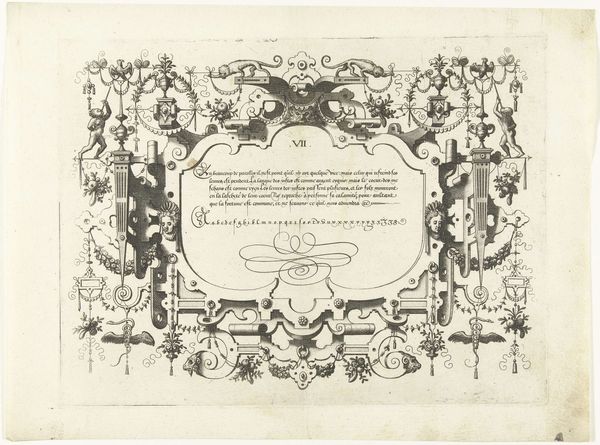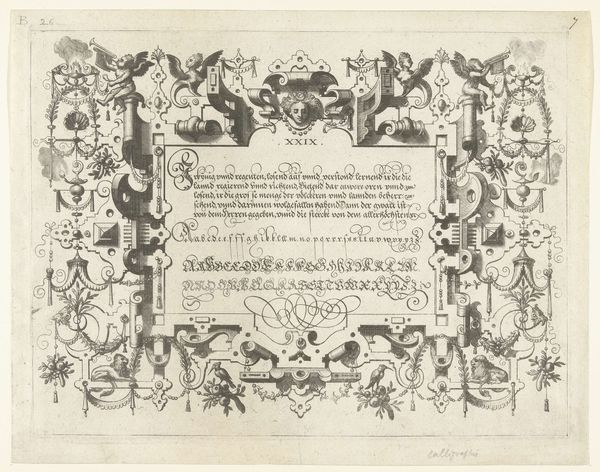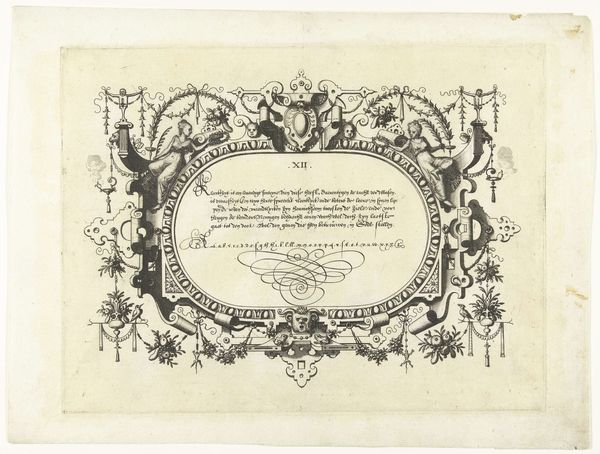
Cartouche met kalligrafie, links- en rechtsboven een vrouw met een palmtak en een zegekrans 1569
0:00
0:00
johannesoflucasvandoetechum
Rijksmuseum
drawing, print, paper, ink, engraving
#
drawing
#
allegory
#
pen drawing
# print
#
pen illustration
#
pen sketch
#
paper
#
ink line art
#
11_renaissance
#
personal sketchbook
#
ink
#
ink drawing experimentation
#
pen-ink sketch
#
pen work
#
sketchbook drawing
#
northern-renaissance
#
decorative-art
#
sketchbook art
#
engraving
#
calligraphy
Dimensions: height 214 mm, width 285 mm
Copyright: Rijks Museum: Open Domain
Curator: Let's turn our attention to this fascinating piece titled "Cartouche met kalligrafie, links- en rechtsboven een vrouw met een palmtak en een zegekrans," which translates to "Cartouche with calligraphy, above left and right a woman with a palm branch and a victory wreath". It was crafted in 1569, and the Rijksmuseum holds this testament to Renaissance artistry. Johannes or Lucas van Doetechum created this engraving. Editor: Whew! It's dizzying, almost overwhelming, but in a good way! It reminds me of the ornate borders you’d find illuminating some ancient manuscript… but cranked up to eleven. There’s so much detail packed into every nook and cranny! Curator: Absolutely. It embodies the decorative exuberance of the Northern Renaissance. Beyond mere decoration, though, consider how cartouches like this served a crucial function. They provided a framework, literally and figuratively, for displaying text. In this case, calligraphy is elevated beyond its function as communication and moves into the realm of high art. And remember the socio-political context. During this era, mastery of calligraphy was often tied to social standing and intellectual prowess. Editor: So it was both a container and a statement! I’m curious about the figures, the women holding those branches and wreaths. They seem serene amidst all this controlled chaos! Curator: They do, and I appreciate you noticing that serenity. These are allegorical figures, representing victory and perhaps peace. Note their placement at the top; their attributes imply the rewards that come with learning, with the acquisition of knowledge through language. It speaks to how humanism and classical ideals had begun influencing even the smallest details in art and life during this period. Editor: I wonder what it felt like to learn to write back then. To put pen to paper, attempting to emulate this level of elegance...must have been quite something, like an act of devotion! There’s also this sense of meticulous precision. Every flourish, every tiny bird perched along the edge seems perfectly placed, balanced with great intentionality. Curator: Precisely! These details were not merely decorative flourishes; they communicated meaning within a carefully constructed visual system. And the act of creating this piece, the engraving itself, involved tremendous skill and patience. Editor: It almost makes you wish you could decipher the calligraphic text fully and unlock even more layers of its mystery. Maybe learn calligraphy yourself. It has made me reflect on the beauty of handwriting in an increasingly digital age. Curator: Indeed. It compels us to recognize that our interaction with language, with visual forms, carries historical and cultural weight that's worth contemplating.
Comments
No comments
Be the first to comment and join the conversation on the ultimate creative platform.
